Virtual culinary tour: Typical Spanish dishes, desserts and drinks
I always say that if I had to choose my home country based on its gastronomy, it would be Italy without hesitation. I love pasta, I love pizza, I love lasagne… However, I have to admit that I am positively surprised in the Spanish cuisine. Not like I had any presumptions about it before – especially because until two years ago I didn’t even know what tapas were, – but I have become quite obsessed with a range of Spanish food, which is something I just didn’t expect to happen. So today I am bringing you a post about the typical Spanish cuisine, including desserts and drinks as well, and I am going to share my personal opinion about them.
Paella
This is probably the most famous Spanish dish with Valencian origins, but nowadays it is considered as a traditional national dish. There are many different types of paella, such as veggie or seafood, but the Valencian version is regarded as the original one. Its main ingredients are rice and meat, which can be chicken or rabbit, and its other characteristic is its yellow colour thanks to the saffron. The dish was named after the special pan they cook it with, which is called paella or paellera.
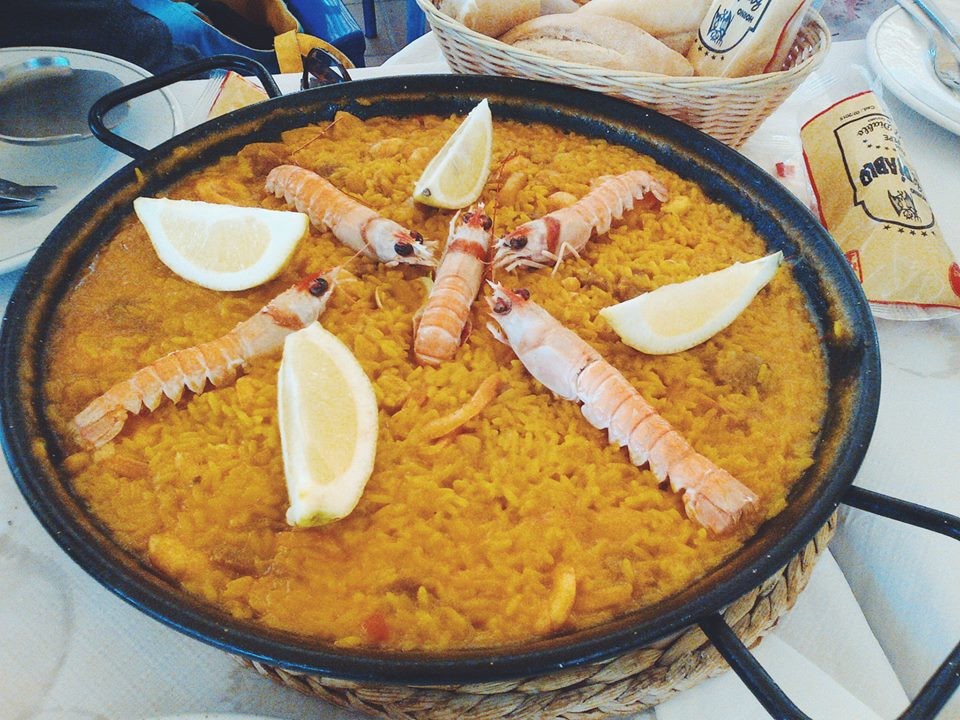
My opinion: Interestingly, at the beginning I didn’t think of it as anything extraordinary, but every single time I like it more and more, and I have also cooked it myself once. 8/10
Croquetas
Croquette is known in many different countries, however the recipe varies. While the Hungarian croquette, for example, is made of potatoes, the base of the Spanish croquette is a stiff bechamel, which is then topped up by everyone’s preferred ingredients, such as ham, chicken, boiled eggs, vegetables, etc. Croquetas can be found in every single tapas bar and are usually served with bread or potato chips.
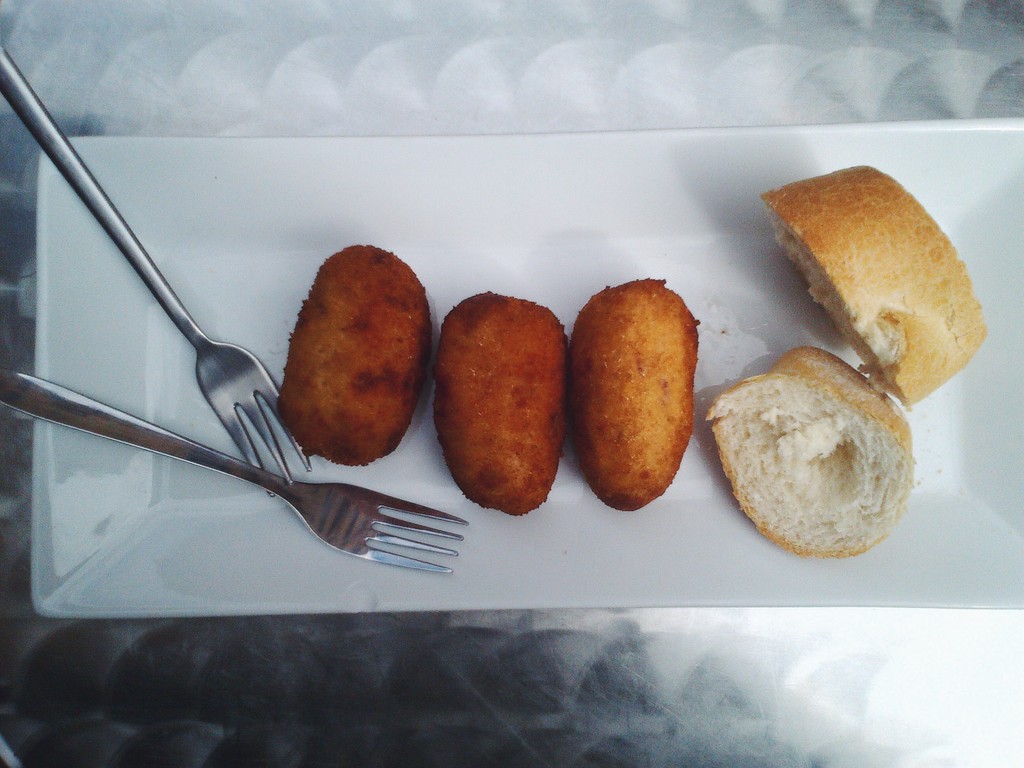
My opinion: This is one of my personal favourite. It was love at first sight and by now I have mastered my cooking skills to make the perfect Spanish croquette. 10/10
Huevos rotos
Translates to English as broken eggs. Another dish that is offered in almost any restaurant and bar. It has basic ingredients: fried potatoes, ham and fried eggs on the top. The key to this dish is to leave the yolk liquid and spread it on the potatoes: this is why it’s called broken eggs.

[on the right]
My opinion: It’s nothing special, but contains ingredients that I love. This was the second food I tried when arriving in Spain. 9/10
Tortilla Española / Tortilla de patatas
The Spanish omelet again comes with a simple recipe; eggs, potatoes and onion are all we need and to fry them together so that the flavours get mixed up right at the beginning of the cooking process.
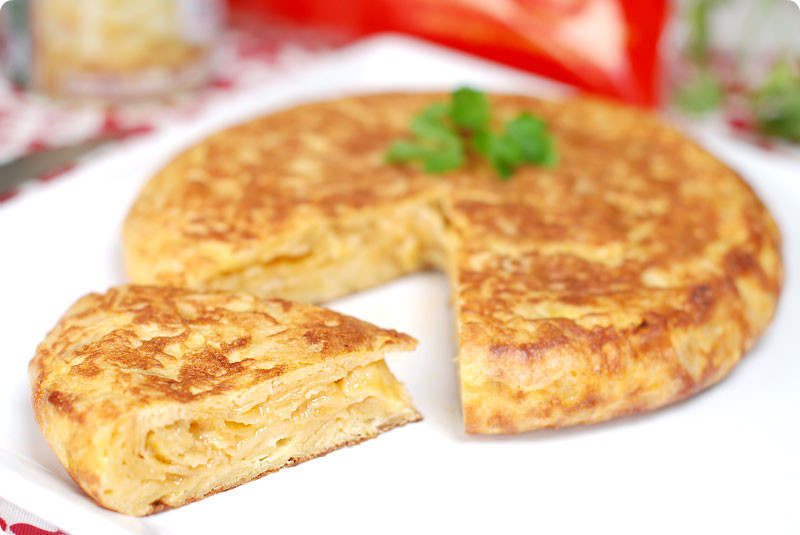
My opinion: I like potatoes and eggs individually and even together – like in huevos rotos – but I specifically don’t like the result of mixing them and cooking them together. 6/10
Pimientos de Padrón
Pimientos de Padrón are Galician peppers, typically cultivated in the town called Padrón, in the North West Spain. They are quite small and usually have a bright green colour. Sometimes they can be particularly hot, but fortunately I have only eaten milder ones, otherwise I would have had a big problem as I cannot take very spicy food. The preparation is absolutely easy but the more delicious! The peppers are fried in olive oil and served with salt on the top. It has a little bitterish touch, but the salt suppresses the strong flavour, and they are even better as complementary to a main course.
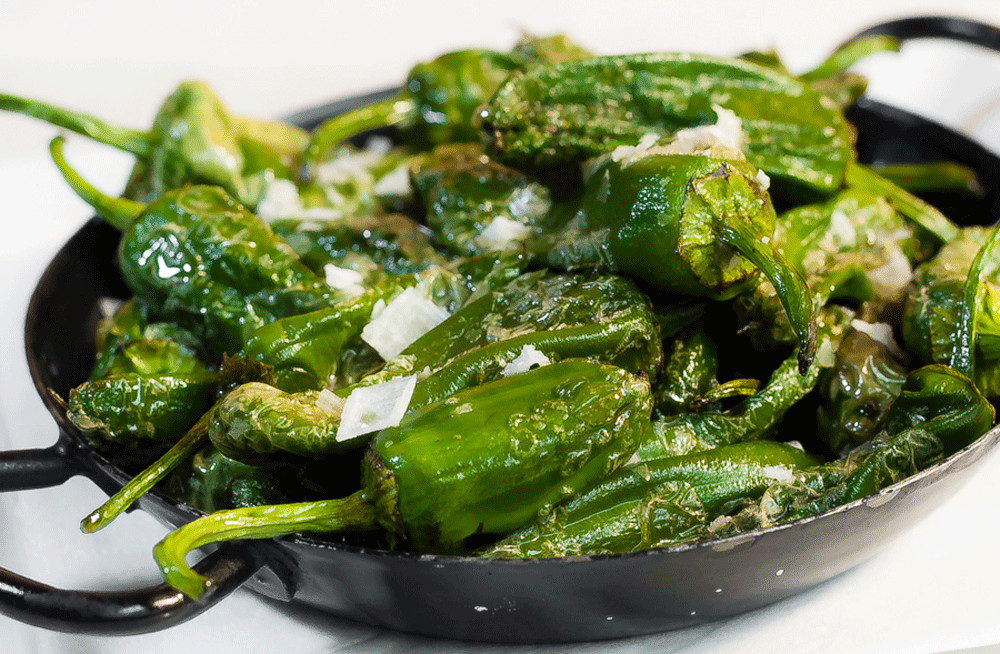
My opinion: I’m not a big fan of peppers, and thus, a whole year was spent tasting them. I didn’t even want to think about it. But one time when the mother of my boyfriend prepared it for us, I decided to give it a try, and for some miraculous reason I couldn’t stop eating them. Since then, I keep looking for the opportunity to order them in a restaurant and for the mother of my boyfriend to cook it again. 10/10
Pulpo a la gallega
This dish again is from Galicia and serves as an integral part of it gastronomy, but during the years it has become widespread throughout every region in Spain. The main ingredient is octopus, which is cut into slices and cooked in water, while served with a lot of paprika on top.
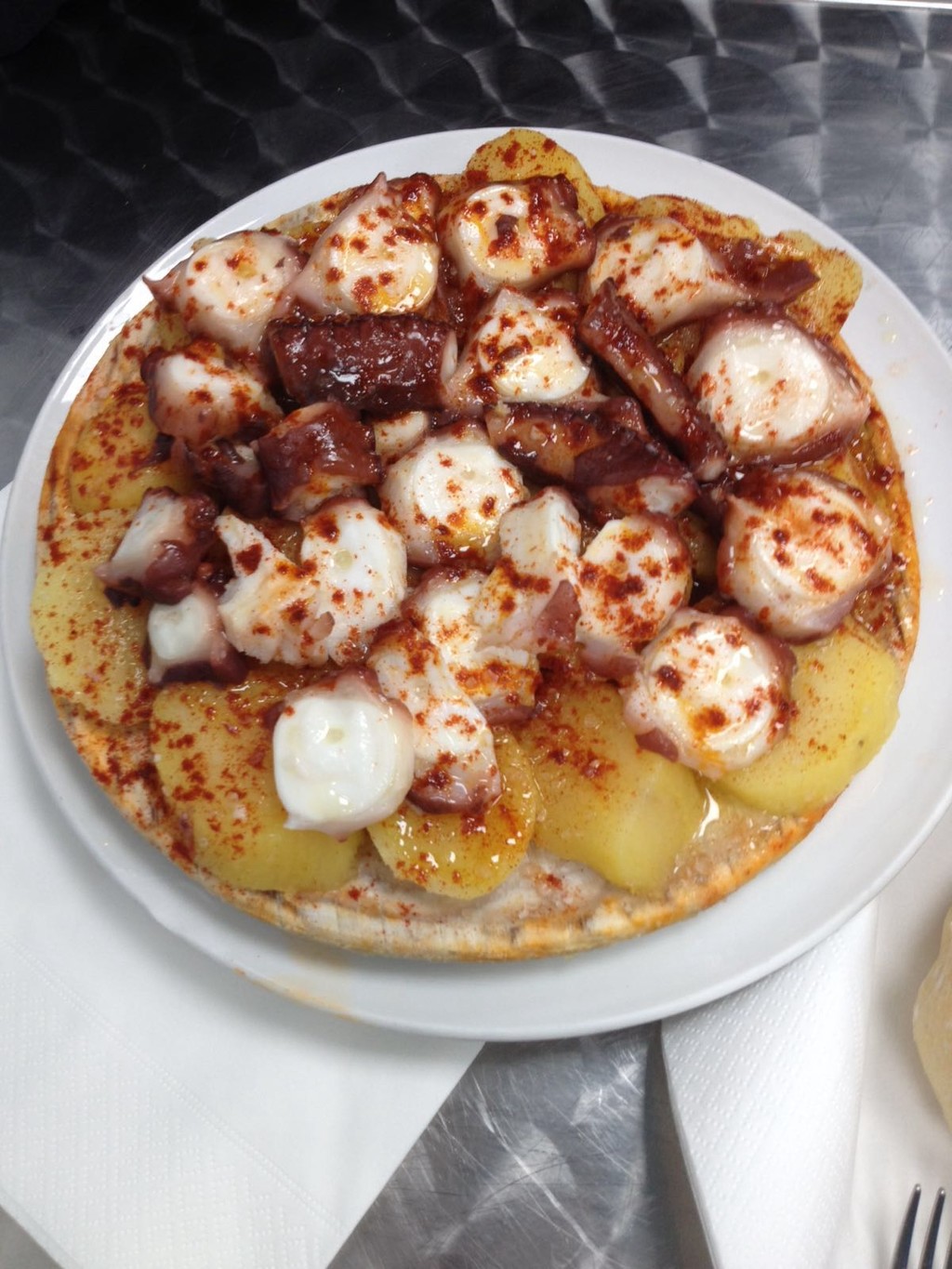
My opinion: I just cannot take the courage to put the octopus pieces in my mouth, but hopefully once I change my mind and realize what others know already; that it tastes good. But for the moment, I’m just freaked out by the look of it. 1/10
Jamón Ibérico
Jamón Ibérico, or Iberian Ham, is a type of cured ham made of Iberian pigs, and is produced in Spain or Portugal. You might wonder why I include such an everyday ingredient as ham in this list. Well, the truth is that this is much more than simple ham: it is the King of the hams that is cut freshly in the restaurant in front of your eyes. Unfortunately, for this reason, it’s quite expensive as well, but once in a while it is worth the price.
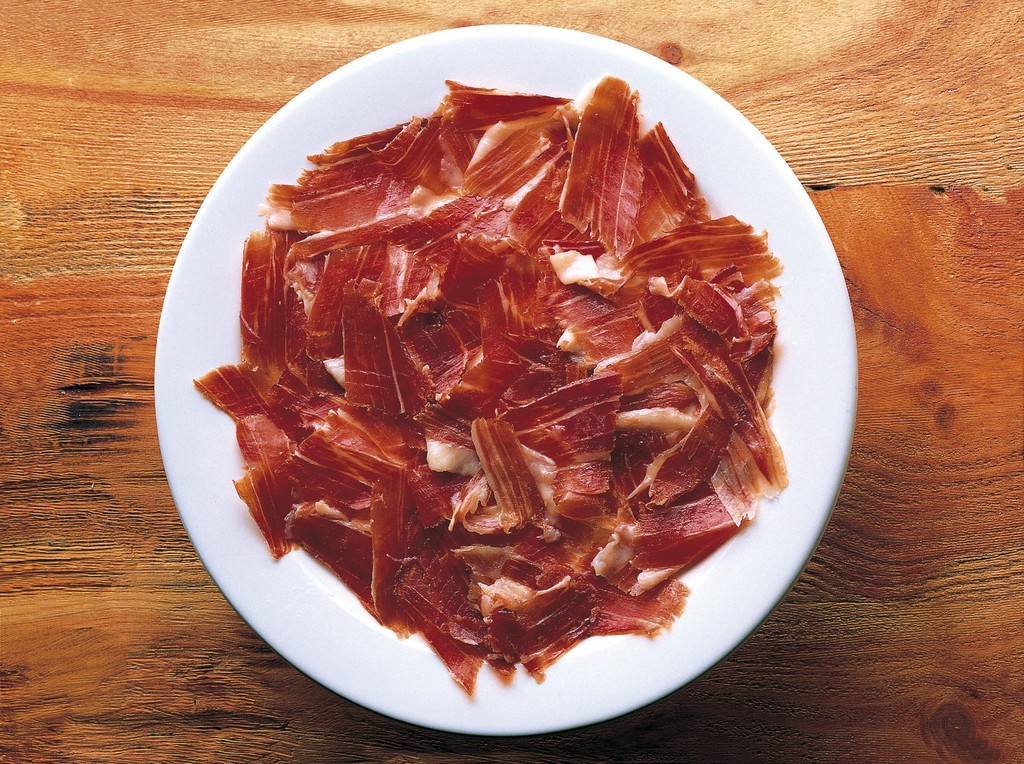
My opinion: Simply amazing! 10/10
Gazpacho
It is an Andalusian cold tomato soup made of tomatoes, peppers, cucumbers, onion, garlic, vinegar and herbs. Originally, it was eaten by the southern inhabitants of Spain, as a result of their need to have something refreshing during the hot summer, but now it is widely prepared all over Spain. Similarly to many regional dishes, gazpacho has its own variations as well.
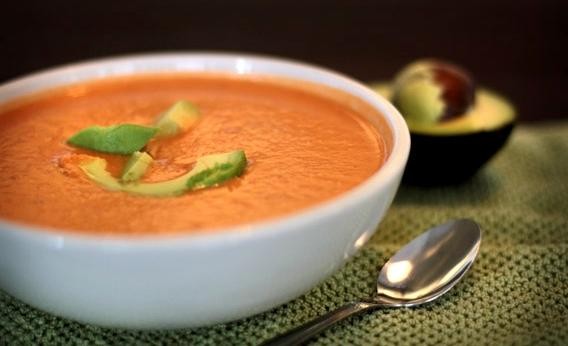
My opinion: We have tomato soup in Hungary as well (it is hot), and I have never liked it. I’ve had the chance to try gazpacho many times, and although it’s not bad, I assume it will never be amongst my favourite Spanish dishes. The reason is that I don’t like one of the ingredients, but so far I couldn’t figure out which one. 5/10
Patatas bravas
This one is basically a dish of fried potatoes served with a characteristic spicy tomato sauce called brava. It is offered in most of the bars as a tapa.

My opinion: As I have mentioned already a couple of times, I like potatoes – who doesn’t. But I have never really liked sauces. Not mayonnaise, not mustard, and especially not ketchup! So I guess not a surprise that that salsa brava didn’t convince me, either. 6/10
Empanadas
An empanada is a stuffed pastry fried in abundant oil. The filling can consist of many different things – vegetables, meat, cheese, tuna and even fruits, – but the point is to wrap or coat the given ingredient in bread or pastry. Or as Spaniards call it: empanar. Afterwards, the empanadas are fried in abundant oil. And our dish is ready!

My opinion: If the ingredients are to my taste, there is really not much not to like. We usually eat empanadas with tomato and tuna filling and they are very good. 9/10
For my sweet-toothed readers
Now that we have familiarized ourselves with the typical Spanish dishes, I would like to list some of typical desserts as well.
Churros con chocolate
What else would I start with than with churros con chocolate? By now, you must know that I’m in love with churros. But not only because of that: if there is anything as famously Spanish regarding desserts as paella is regarding main courses, that’s churros without doubt. It is a type of donut made of flour, water and salt. Once the dough is done, it has to be fried in oil and served with chocolate – and optionally with sugar as well. While the dough itself is quite salty, it makes a perfect match with the chocolate. Spaniards typically have it for breakfast.

My opinion: If anyone still has doubts: 10+/10
Crema Catalana
It is the Catalan equivalent of crème brûlée. The base of this dessert is a rich custard topped with hard caramel in order to make it crunchier and raise its aesthetic value. The custard traditionally has a vanilla flavour but it might vary based on the place we consume it.
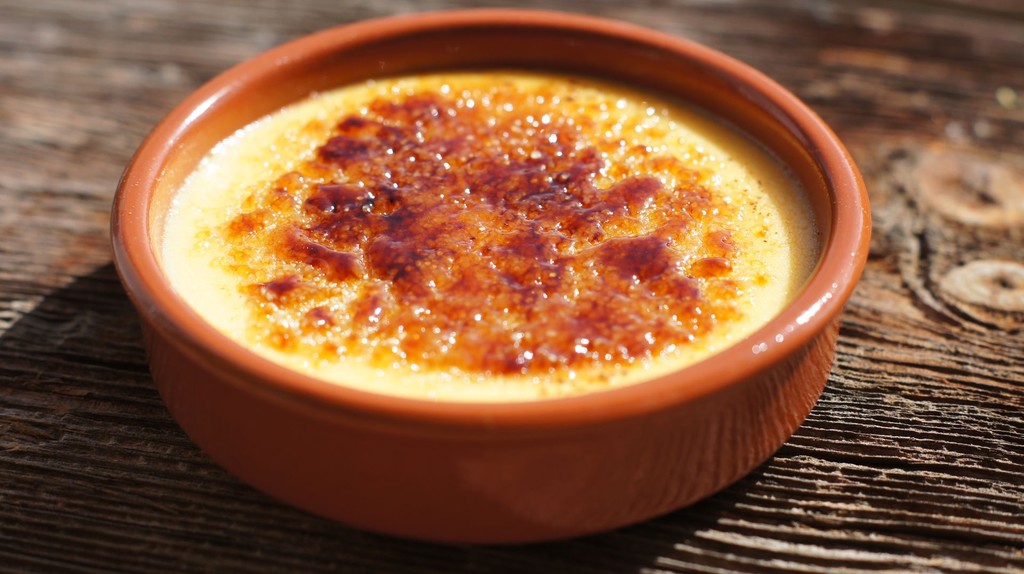
My opinion: I have tried it once, but it was a little bit too sweet for me. However, I don’t want to judge based on that one time, so I cannot wait to taste it again. 7/10
Turrón
Turrón is a typical Christmas confection, but it can be eaten anytime of the year. It contains honey, sugar, glair and most often comes with toasted nuts. However, a wide range of flavouring exist, which I am very grateful for, because I didn’t like the former ones. Another characteristic of turrón is that it is shaped into a rectangular tablet. The original recipe is probably from the Arabian world.

My opinion: As I have spent Christmas in Hungary, I wanted to surprise my family with some traditional Christmas food, cookie or confection, and I knew that turrón fitted the profile. So I found a little but quite expensive package of different types of turrón, but surprisingly half of the package remained, because I found only two or three flavours that I liked. So finally, I decided to stick with those ones and buy a big tablet in each one of them. 7/10
Drinks
To finish off, I will talk a little bit about two Spanish wine specialties: tinto de verano and sangria. They are almost the same; both of their base is red wine. The difference is that while the recipe of sangria contains orange juice, lemon juice, sugar and cinnamon, tinto de verano is made of 50% wine and 50% soda or 50% lemon drink. The success of sangria is still unstoppable, however, tinto de verano is becoming equally in demand among Spanish consumers.
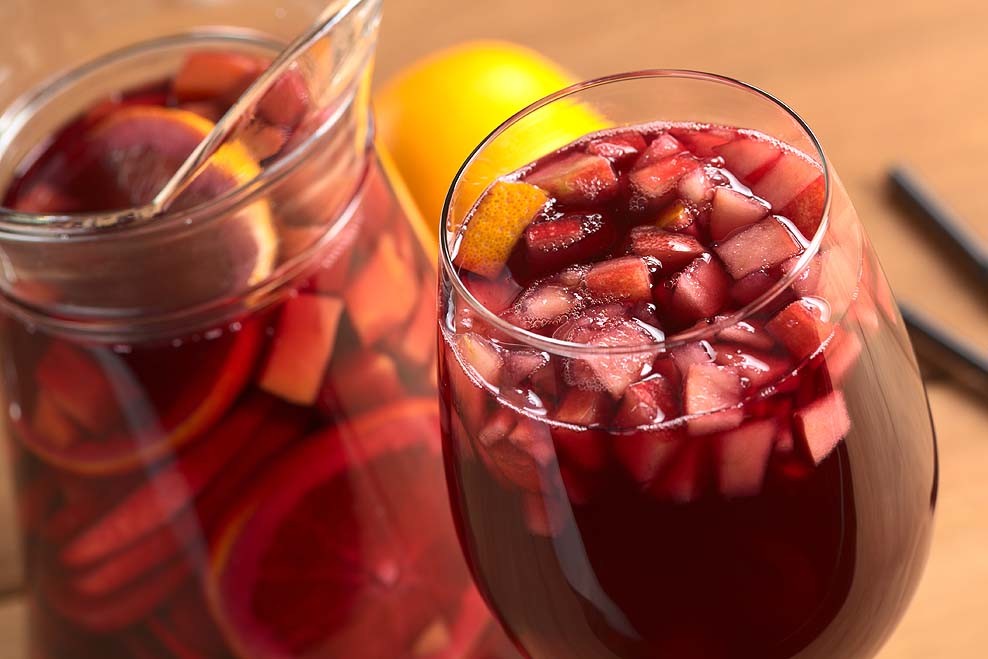
My opinion: I honestly cannot feel much difference. In sangria I might feel the alcohol a little bit better, while tinto de verano resembles a tiny bit more to a normal drink. 10/10
I don’t know about you, but I have become quite hungry by writing this post. If you visit Spain, make sure to taste at least some of the listed dishes, you won’t be disappointed!
Photo gallery
Content available in other languages
- Español: Tour culinario virtual: típicos platos, postres y bebidas españoles
- Polski: Wirtualna podróż kulinarna: typowe hiszpańskie dania, desery i napoje
- Français: Visite virtuelle culinaire : les plats, desserts et boissons typiques d'Espagne
- Italiano: Tour culinario virtuale: piatti tipici spagnoli, dessert e bevande
- Português: Visita Gastronómica Virtual: Típicos pratos, sobremesas e bebidas espanholas!!
- Deutsch: Virtuelle Küchentour: Typische Spanische Mahlzeiten, Nachspeißen und Getränke
Want to have your own Erasmus blog?
If you are experiencing living abroad, you're an avid traveller or want to promote the city where you live... create your own blog and share your adventures!
I want to create my Erasmus blog! →

















Comments (0 comments)